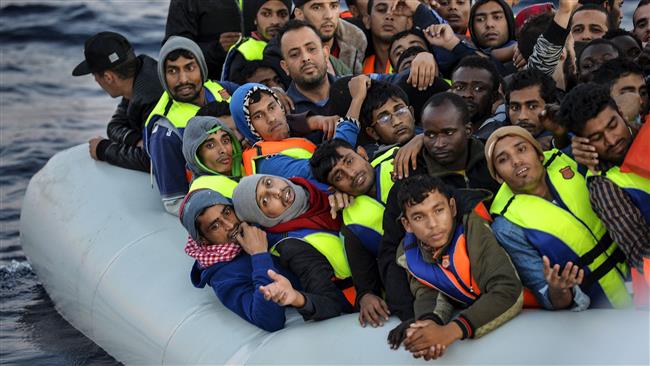Asylum requests down in developed countries
Developed countries received sharply fewer asylum applications last year, a report said Wednesday, as the world remains gripped in a migrant crisis fuelled by wars and economic hardship.
Applications for asylum in the 36-country Organisation for Economic Cooperation and Development (OECD) dropped 34 percent to 1.09 million last year from 1.65 million at the height of the migrant flow to Europe in 2016.
“Because of the drop in asylum applications, the number of registered refugees also declined” from about 900,000 permits issued in 2016 to 700,000 in 2017, said the OECD.
Despite the decline in asylum seekers, humanitarian migration remained at a “historically high level”, said the bloc, whose members are from Europe, the Americas and the Pacific — many of them key migrant destinations.
“While it is not the main channel of immigration to any OECD country… it is the second-largest channel of migration to Austria, Germany, Sweden and the United States.”
The report said OECD members received 5.3 million new permanent migrants in 2018, a two-percent rise over 2017, mainly due to families joining a growing number of expat workers.
There was also a rise of 11 percent in the number of temporary workers to about 4.9 million in 2017, the latest year for which data was available.
– Don’t ignore fears –
Migration has been a key issue for figures including US President Donald Trump, Italian ex-interior minister Matteo Salvini and French far-right leader Marine le Pen, with many countries seeing a sharp shift to the right ascribed partly to anti-immigrant sentiment.
“In a number of countries, a common public perception is that migration is uncontrolled and costly,” the OECD said.
While there was “little evidence to support these views,” it would be a mistake to ignore people’s migration fears, the report warned.
The report expressed concern that people tend to confuse illegal and lawful movements, and to view all migration as driven by indigence, it said.
It said communication needs to be improved, noting a recent European study found that 60 percent of respondents did not feel they were well informed about immigration and integration.
“And EU respondents, on average, overestimate the number of migrants from outside Europe by a factor of two,” it said, adding half thought, wrongly, that there were more illegal migrants than legal ones.
– British emigration –
Last year, the United States was the main destination for asylum seekers in the OECD, with 254,000 applications, a drop of 23.3 percent. Germany was second with 162,000 applications, and Turkey in third place with 83,000.
Poland was the top destination for temporary migrant workers with more than 1.1 million people, mainly Ukrainians, followed by the United States with almost 700,000 temporary labourers in 2017.
On average, over 68 percent of migrants in the OECD were employed, said the report, but in Italy and France, only about 40 percent had jobs.
Most temporary workers were employed either as low-skilled workers in farming, construction, manufacturing and freight transport, or in very high-skilled fields such as IT or health.
The United States saw a drop of five percent with 1.1 million new permanent residents in 2017, the report noted, and refused a higher number of temporary labour permits.
Neighbouring Mexico, which Trump has pressured to hold people migrating northward to escape violence and poverty in Central America, saw a 30-percent rise in asylum applicants.
Most were from Honduras, Venezuela and El Salvador.
Britain, caught up in a troubled exit from the European Union, saw a 0.4 percent rise in its own residents emigrating to OECD countries, a total of 131,000 last year, said the organisation.
Most went to Spain, Australia, and Germany.
Source: AFP





